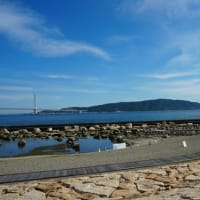The following is from the serial column of Masayuki Takayama, who brings the weekly Shincho released yesterday to a successful conclusion.
This article also proves that he is the one and only journalist in the postwar world.
It is a must-read not only for Japanese citizens but also for people around the world.
The emphasis in the text other than the headline is mine.
The Deadly Sins of the Asahi Shimbun
The Asahi Shimbun was decent until shortly after the war.
It reported with a frown the 120 cases of rape and looting of U.S. soldiers that occurred each day after the U.S. troops moved into the country.
They also warned that they would steal fountain pens and wristwatches.
The Nippon Times also commented, "If it is the same military government, the Japanese military is much better.
Asahi commissioned Ichiro Hatoyama to write about the atomic bombing and published the article on September 15, 1945.
Hatoyama declared that "the atomic bomb was a war crime, an act that violated international law more than the attack on the hospital ship or poison gas," and harshly criticized "U.S. generals should go to the A-bombed cities and see the devastation.
When GHQ forced the publication of the article "The Massacre of Manila Citizens by the Japanese Army," the editorial office protested, "How could 100,000 people be raped and killed under the bombardment of the U.S. Army?
They added to the article, "There are witnesses," and "It should be verified."
These two incidents angered GHQ, and it is generally said that he volunteered to be a "loyal dog of the Allied Forces" when it issued the order to stop publication.
Some believe Asahi not only switched sides but actively "abandoned Japan."
In fact, even after GHQ left, Asahi did not stop undermining Japan and did not try to stand on the side of the Japanese people.
So, where did it go?
For example, Kyozo Mori and Tomoo Hirooka, who continued to write the front pages of the Asahi Journal, chose to live up to Mao Zedong.
Hirooka despised the Japanese by having Honda Katsuichi write "Travels in China" without a shred of truth for Mao.
Hata Shoryu and Watanabe Seiki were the ones who advocated Stalin's "hurrah" about the Soviet Union.
In the editorial office, the China faction and the Soviet faction became bitter, but they cooperated in their criticism of Japan.
In the 1980s, when Watanabe was president, Asahi made a big fuss about the Ministry of Education's textbook inspection, saying that the Japanese invasion of North China had been rewritten to include an advance by the Japanese army.
Asahi continued, "There was the Nanking Massacre. The Miyakonojo Regiment, which was in the vanguard of the invasion, committed the massacre," with a photo of raw heads in various states.
It also carried a special report, "This is the poison gas operation," with a picture of smoke billowing in the air.
All three stories were false, and Asahi did not even issue a correction when the lies were exposed.
Meanwhile, Ryu Shintaro infiltrated the CIA through a friend from his correspondent days, Allen Dulles, and continued faithfully reporting GHQ's "War Guilt Information Program (WGIP)" in the paper.
Meanwhile, Kyozo Mori's Asahi Journal sold 250,000 copies weekly, inciting students.
During the 1960 Security Treaty, he had 100,000 students rush into the Diet, causing the death of Michiko Kanba.
When the atmosphere on the eve of the revolution became favorable, Ryu Shintaro immediately took on board the intentions of the U.S., which did not like the idea of Japan becoming communist.
He called the chief editors of seven Tokyo-based newspapers, including Mainichi, Yomiuri, and Sankei, to publish a joint editorial urging them to "eliminate violence and protect parliamentary democracy.
The seven companies that knew that behind Asahi were Mao Tse-tung and the Soviet Union.
But they also knew that the most significant presence was the United States.
Ryu's words were the words of the United States.
The world was surprised.
They wondered if the Asahi Journal would incite a revolution and remove the ladder at the last minute.
To Asahi, Japan was an object of ridicule and humiliation but a country it had long since abandoned.
Is Asahi removing the ladder?
What does it matter?
The man who appeared at the opposite end of the spectrum from Asahi was Shinzo Abe.
The former prime minister uncovered the lie of the comfort women that Asahi had told Seiji Yoshida and effectively dismissed the Kono statement that officially recognized it.
The Japanese version of the WGIP protected by Asahi, the Murayama discourse, has also been replaced with the Abe discourse, which talks about "Japan that won the Russo-Japanese War and encouraged the colonial people of Asia."
Asahi was outraged, and the Soviet, Shina and U.S. factions united to defeat Abe.
Masakazu Honda wrote a lie about "NHK program alteration," Hiroshi Hoshi pursued wartime sex slavery, but the boomerang effect, or the head of Tadakazu Kimura, flew off.
The Osaka Social Affairs Department forged the suspicion of Morikake, but it also bounced off the Asahi and produced a current account red of 1.4 billion yen.
When the Asahi was empty of "Death to Abe" abuse, the insanity that went along with it took off.
There is no destination anyway.
Why don't you discontinue the publication before you get busted for abetting murder?



















